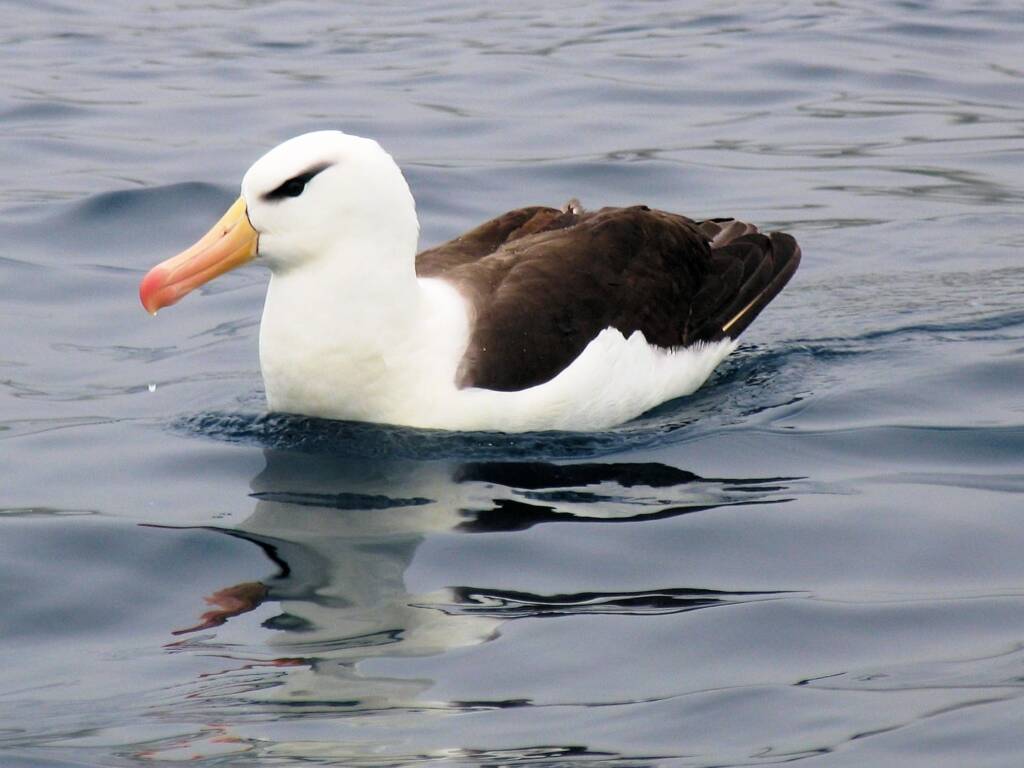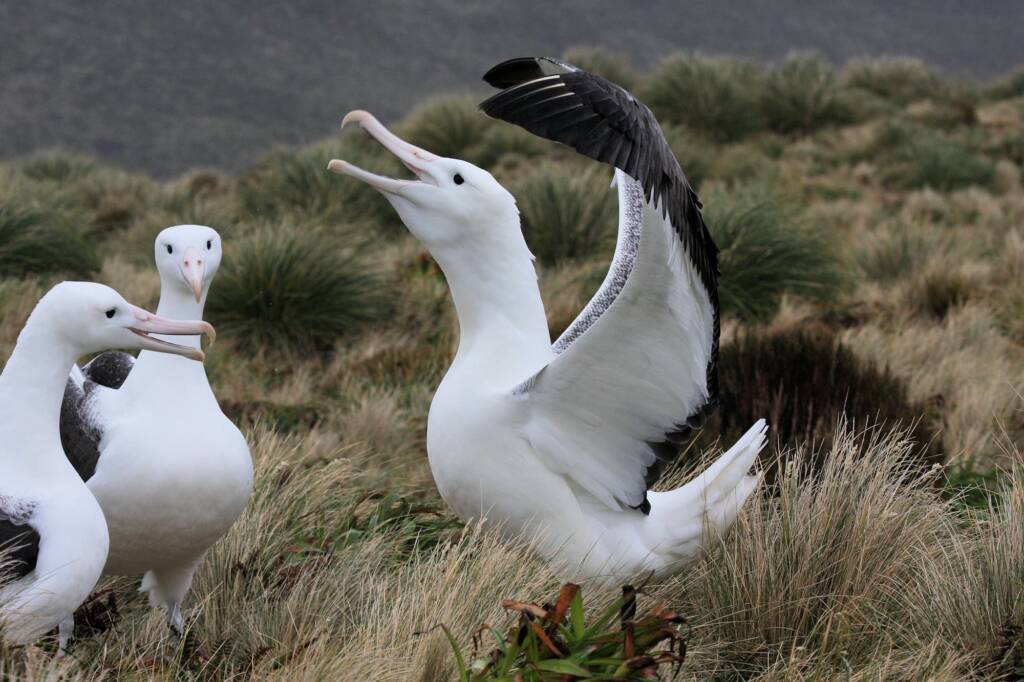Snapshots from Antarcticathe journey heritage ice and snow Mount Erebus scenic vistas fellow travellers life saver wildlife albatross penguins petrel and skua seals whales
Of the many creatures associated with the Antarctic region are the unique species of bird life, including the albatrosses. Indeed, watching the albatross soaring across the ocean, is a breathtaking sight. These feathered creatures, with their huge wingspan (ranging up to over 3 metres across), gliding across the ocean water with barely a flap to their wings, were once considered a messenger bird, holding a special place in maritime lore and superstition. Among sailors, the albatross is considered a harbinger of good luck. However, to capture or kill the bird, whether deliberate or accidental, is thought to be disastrous, bringing misfortune and woe to the ship and its crew, and death or curse to the sailor who killed the albatross.
The most memorable written work about the albatross is that of “The Rime of the Ancient Mariner” by Samuel Taylor Coleridge. This magnificent poem narrates the tale of the Mariner who sets sail with his crew. The ship is suddenly hit by a terrible storm and driven southward into a “rime” – a strange, icy patch of ocean…
And now there came both mist and snow,
And it grew wondrous cold:
And ice, mast-high, came floating by,
As green as emerald…
The ice was here, the ice was there,
The ice was all around:
It cracked and growled, and roared and howled,
Like noises in a swound!
Having eventually been driven to the south pole, they were stranded until the appearance of the Albatross…
At length did cross an Albatross,
Thorough the fog it came;
As if it had been a Christian soul,
We hailed it in God’s name.

The Antarctic region is home to a number of albatross species including the Black-browed Albatross and the Southern Royal Albatross. Many albatrosses suffer from loss of their food source such as the decline of the southern cuttlefish population, illegal longline fishing and oil spills.
The Australian Government – Australian Antarctic Division and Tasmania Parks & Wildlife Service websites provides some information about the birds and other wildlife.
Black-browed Albatross (Thalassarche melanophris)
One of the smallest of the 24 albatross species, the black-browed albatross has a wing span of about 210-250 cm, with the adult bird being no larger than 80-95 cm in length. It is mostly white with grey-brown highlights and a bright yellow beak. It is the wonderful black slash of colour across their eye which gives them their name of the ‘Black-brow Albatross’. They live for some 30 year or more, although they are becoming endangered with their numbers decreasing, due to the interaction with the longline fishing vessels.
You can find out more about the Black-browed albatross from the Australian Antarctic Division – Wildlife website, including information on seabird mortality in longline fisheries.

- Scientific classification
- Kingdom: Animalia
- Phylum: Chordata
- Subphylum: Vertebrata
- Informal: Gnathostomata
- Class: Aves
- Order: Procellariiformes
- Family: Diomedeidae
- Genus: Thalassarche
- Species: Thalassarche melanophris
Southern Royal Albatross (Diomedea epomophora)
The Southern Royal Albatross is the second largest albatross behind the Wandering Albatross. With a wingspan of some 3 metres and sometimes longer, this black and white albatross are mostly white, with black tips to the upper wings close to the body, with the white spreading outwards from the body along the edge of the wing. They have a light pinkish bill with black edging on the upper beak. It is different to the Northern Royal Albatross (Diomedea sanfordi), which is a fraction smaller. They are thought to live for more than 60 years, although they are listed as vulnerable due to threats by humans and introduced mammals in their nesting sites and longline fishing. Campbell Island has almost the entire world’s population of Southern Royal Albatrosses, with one chick being raised every two years.


- Scientific classification
- Kingdom: Animalia
- Phylum: Chordata
- Subphylum: Vertebrata
- Informal: Gnathostomata
- Class: Aves
- Order: Procellariiformes
- Family: Diomedeidae
- Genus: Diomedea
- Species: Diomedea epomophora
Footnote & References
- Antarctic Travel Photographs © Jennifer Cooke (and fellow travellers)
- Additional Antarctic Travel Photographs © to fellow travellers (courtesy of Jennifer Cooke)
Snapshots from Antarcticathe journey heritage ice and snow Mount Erebus scenic vistas fellow travellers life saver wildlife albatross penguins petrel and skua seals whales
Snapshots from AustraliaSnapshots from New South Wales Snapshots from the Northern Territory Snapshots from South Australia Snapshots from Antarctica Snapshots Road Trains in Australia Snapshots from Ausemade Facebook The Tree of Life…
